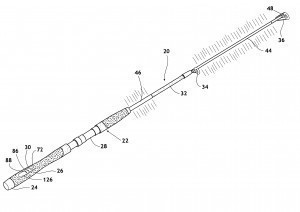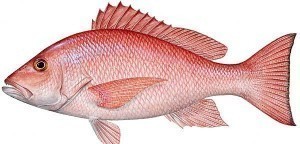Chilean Sea Bass Sizes
If there is one species of fish that has a more misleading name,  it would have to be the Chilean Sea Bass. First of all, it doesn’t even originate from Chile, though it can also be found in the Chilean coasts. And second, it’s not even really a bass, either.
it would have to be the Chilean Sea Bass. First of all, it doesn’t even originate from Chile, though it can also be found in the Chilean coasts. And second, it’s not even really a bass, either.
The Chilean sea bass is more properly known as the Patagonian toothfish, or by its binomial name Dissostichus eleginoides. It is one of two species (the other one being Dissotichus mawsoni, also known as the Antarctic Cod or Antarctic toothfish) belonging to the genus Dissotichus. Fish of this genus are known to have a life span of more than 50 years, grow to over 2 meters in size and over 200 kg in weight.
Dissotichus species are located in southern oceans, with the Chilean sea bass in particular occurring in the Southern Pacific, Southern Atlantic, Indian and Southern Oceans. It thrives in cold, temperate waters with a depth of 45m to 3, 850 m (148 ft to 12,631 ft). The diet of the Chilean sea bass is comprised mainly of fish, prawn and squid. As for their own place in the food chain, they serve as primary prey for the Southern elephant seal, the colossal squid, and the sperm whale.
Commercially-caught Chilean sea bass weigh an average of 9 to 10 kg (20-22 lbs), though on rare occasions there are large adults that weigh more than 200 kg (440 lbs). They are known to grow to a size of 2.3 m (7.5 ft) long. They are also known to mature very slowly, with a tendency to accumulate during spawning, which makes it easy for fishing trawlers to ensnare them. While they are not exactly an endangered species, Chilean sea bass are under threat from overfishing, and studies have noted the species’ population declining steadily.
The Chilean sea bass’ popularity in recent years as food fish is one factor to which the overfishing of the species is attributed. As such, some have suggested that pressure from the fishing industry is what has really kept this popular commercial fish from officially landing in the endangered species list. There has also been difficulty in studying and regulating the fish’s population, as well as in determining if individual Chilean sea bass had been harvested legally or not. Hence, those concerned with conserving them urge consumers to take alternative food fish choices into consideration, in the hopes that curbing the demand for these fish would curtail overfishing and poaching, and allow the species to replenish its depleted population.





